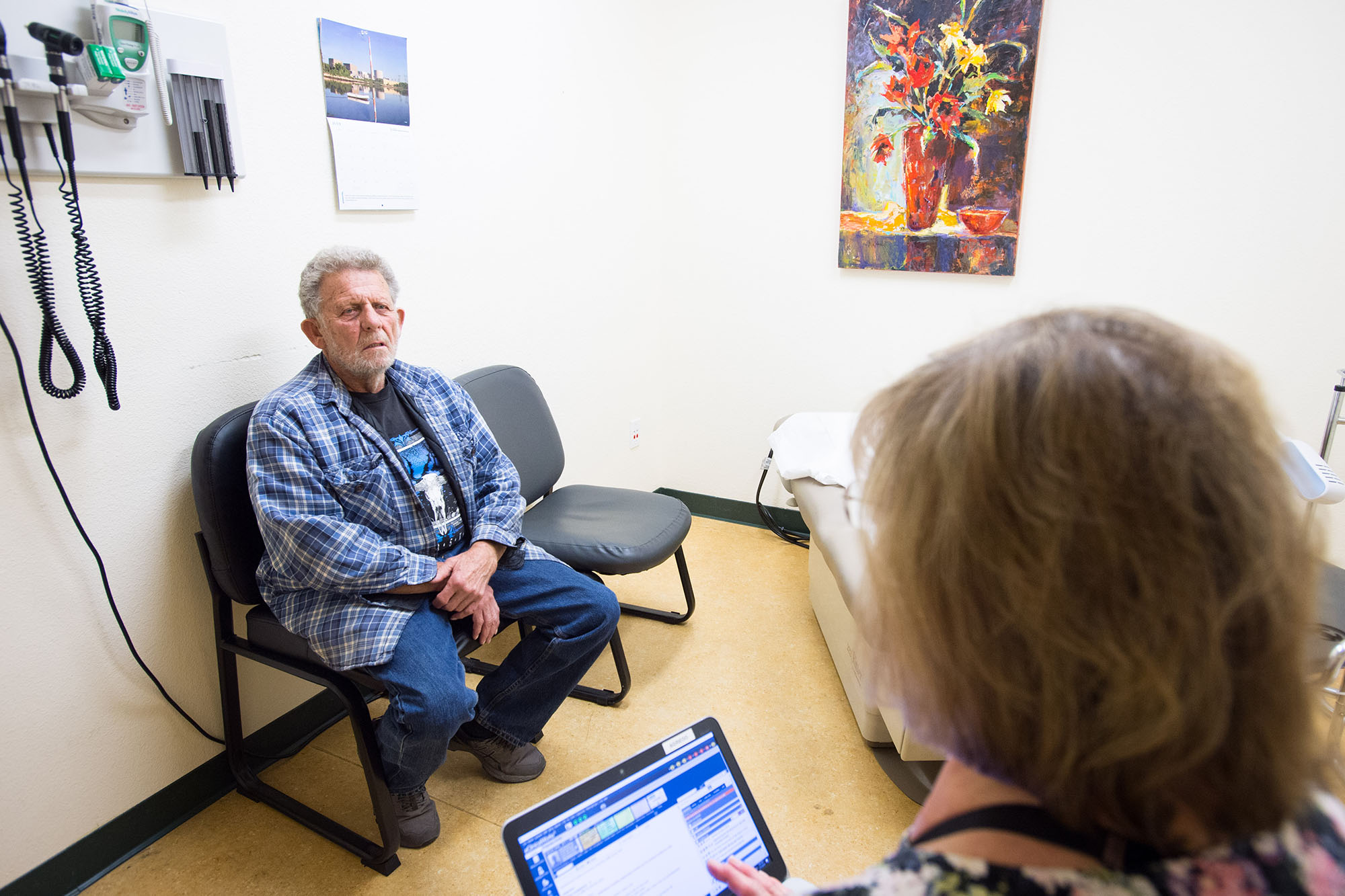
Ensuring price transparency has long been a strategy to bring relief to the millions of Americans who face ever-higher costs for health care — and the long-term health effects of not being able to afford the care they need.

The idea behind transparency is that “shining a light on prices and supplying quality information should drive overpriced providers to reduce their prices or lose business,” Sue Felt-Lisk, Jeff Ballou, and Tim Lake of Mathematica explain in a blog published last year.
These rising costs have a significant impact on Californians’ health, according to the 2021 CHCF Health Policy Survey. Half of Californians delayed care because of cost in the last 12 months. And of those who cut back on care, 41% say their condition got worse.
The survey also revealed that Californians want price transparency in health care, with more than 70% saying that making information about pricing available is “extremely” or “very” important.
Recent measures from the federal government have pushed hospitals on pricing transparency, seeking to shine additional light on the sector receiving the largest proportion of the nation’s (and California’s) health care dollar.
As of this year, hospitals are required to release the prices they negotiate with different insurers and what they charge patients paying with cash, among other measures that allow consumers to understand what they will be charged and compare it to what others are paying for the same services. Hospitals, including large hospital systems in California, have been slow to comply with the new transparency law.
Health care journalists have kept steady attention on the rollout of transparency requirements this year, as have health policy researchers. California, meanwhile, is continuing in a multidecade effort of its own to improve price transparency across the state.
Screenshots Reveal Shocking Markups at Scripps
Glimpses behind the veil of secrecy that surrounds pricing decisions in the health care industry are often shocking and almost always bewildering.
In the most recent of these glimpses, David Lazarus, business columnist for the Los Angeles Times, shared screenshots of a software system converting hospitals costs to patient charges.
The screenshots, taken by a former nurse at Scripps Memorial Hospital in Encinitas, showed routine items marked up as much as 675%.
“One screenshot is for sutures — that is, medical thread, a.k.a. stitches. Scripps’ system put the basic “cost per unit” at $19.30,” Lazarus wrote. “But the system said the ‘computed charge per unit’ was $149.58. This is how much the patient and his or her insurer would be billed.”
Other screenshots of marked-up items included an antimicrobial solution where Scripps’ cost per unit was $73.50, whereas the patient was billed $496.13. Floseal, used to limit bleeding after surgery, cost Scripps $142.81, but the patient was charged $963.97.
“I understand that hospitals have overhead,” the nurse told Lazarus. “But to mark up something like sutures by 675% is insane.”
These charges to the patient always differ from what is actually paid by consumers and insurers. Yet these prices are far from meaningless.
Toward More Widespread and Meaningful Price Transparency
What is actually paid by consumers and insurers has been shrouded in secrecy for many years, though the veil is being slowly lifted. To that end, a federal rule took effect in January requiring that hospitals post information about these paid amounts on their websites.
The new rule has not been immediately embraced by everyone in the industry. In researching compliance with the transparency law, Wall Street Journal reporters Tom McGinty, Anna Wilde Mathews, and Melanie Evans found that although hospitals posted their prices, they used special coding embedded on their websites to keep those pages from appearing in search results on Google and other web search engines.
An investigation by the New York Times this July also showed that compliance with the law doesn’t necessarily clear up pricing confusion.
“The new price data is often published in hard-to-use formats designed for data scientists and professional researchers,” Sarah Kliff and Josh Katz wrote. “Many are larger than the full text of the Encyclopaedia Britannica.”
Kliff and Katz partnered with researchers at the University of Maryland to build a database that allowed for price comparisons and found wild fluctuations in prices charged to patients for the same procedures at the same hospitals, depending on how they paid.
At Memorial Regional Hospital in Florida, for instance, an MRI costs $1,827 with a Cigna plan, $2,148 with a Humana plan, $2,455 with a Blue Cross plan, and $262 with a Medicare plan.
At Aurora St. Luke’s in Milwaukee, an MRI costs United enrollees $1,093 if they have United’s HMO plan and $4,029 if they have United’s PPO plan.
Kliff and Katz also noted that several large health care systems in California were violating transparency requirements, including Stanford Health Care, University of California at San Francisco and Davis, and Cedars-Sinai in Los Angeles.
Limited Compliance with New Price Transparency Rules Within California
Research led by Stanford health economist and professor of medicine Laurence C. Baker found only 30% of California hospitals fully complied with the price transparency rule (PDF) in a study funded by CHCF last spring. Of the 391 hospitals reviewed, about 45% of hospitals “provided a file reporting at least some payer-specific prices,” Baker found.
Twenty-seven percent of the hospitals were completely noncompliant, leading the authors to conclude that “a considerable amount of additional work will be required to achieve the goals of the new regulation.”
A JAMA Internal Medicine study found that only 17 of 100 randomly sampled hospitals complied with at least one aspect of the rule. Among the US hospitals with the highest revenue, the authors found that 25% complied with at least one aspect of the rule.
An American Journal of Managed Care study looked at the websites of 20 prominent US hospitals and found that “a significant proportion of hospitals were not in compliance.” Researchers reported that “only 60% of hospitals display their cash prices, and 5% display their minimum negotiated charges on their public websites.”
Violations of the rule resulted in a fine of $300 a day, a maximum of $109,500 a year per hospital. A new rule, enacted by the Biden administration in November, will raise the maximum fine to nearly $2 million per year per hospital starting in 2022.
A Multidecade Effort to Promote Cost and Price Transparency Within California
California has long required hospitals to post their chargemasters, an exhaustive list of the list prices or charges for all the procedures they perform. David Lazarus’ screenshots provide a look at the difference between production costs and billed charges for a handful of items on Scripps Memorial’s chargemaster.
California’s Department of Health Care Access and Information also produces detailed reports on hospital finances, long-term care facility finances, prescription drugs costs, hospital fair pricing policies, and hospital community benefit plans.
California is also among the 21 states who have or are creating an all-payer claims database (APCD). The databases collect and centralize information about how much is paid for health care and prescription medications in the state.
“Claims are created when an insured patient receives care or fills a prescription, and include a record of what was provided, who provided it, how much was charged, and how much was paid,” Josephine Porter and Denise Love explained in a brief for CHCF.
Other states with APCDs have used the data to monitor costs such as prescription drug prices. Analysis of information from Colorado’s database showed that the average price of an EpiPen rose from about $100 to $500 between 2009 and 2016, Porter and Love noted.
That price hike was one more data point in a swell of public attention to the rising cost of EpiPens in 2016, which ended in a slew of consumer lawsuits against the maker of the life-saving injection device, used by people who suffer from potentially fatal allergies. Pfizer paid $345 million to settle a class-action suit brought by consumers on November 17. In 2017, Pfizer had already paid $465 million to resolve a suit brought by the Justice Department claiming that the drugmaker overcharged the government for the pens.
Health plans will be required to share pricing information with the state, which will subsequently make it available to policymakers and the health services research community, who can use it to find — and call attention to — spiking prices.
With more than half of Californians failing to seek health care because of cost concerns, transparency and other efforts to bring down health care prices remain crucial.
Authors & Contributors

Heather Tirado Gilligan
Heather Tirado Gilligan is a journalist who has written for publications including Slate, The Nation, CNN, and the Washington Post. Previously, she was executive editor of the California Health Report, a news nonprofit covering disparities in health and access to health care. Heather received a master’s degree in journalism from UC Berkeley and a PhD in English from Rutgers University, where she studied race in American culture.




